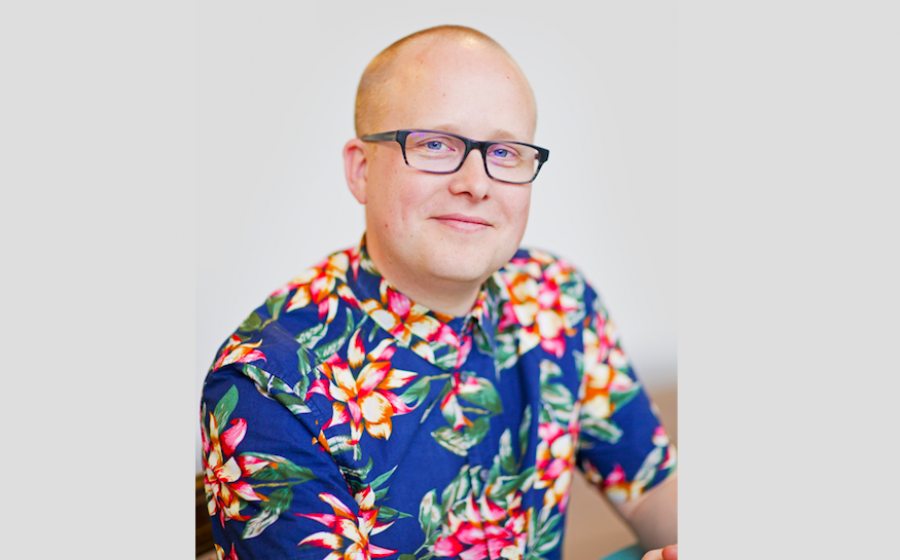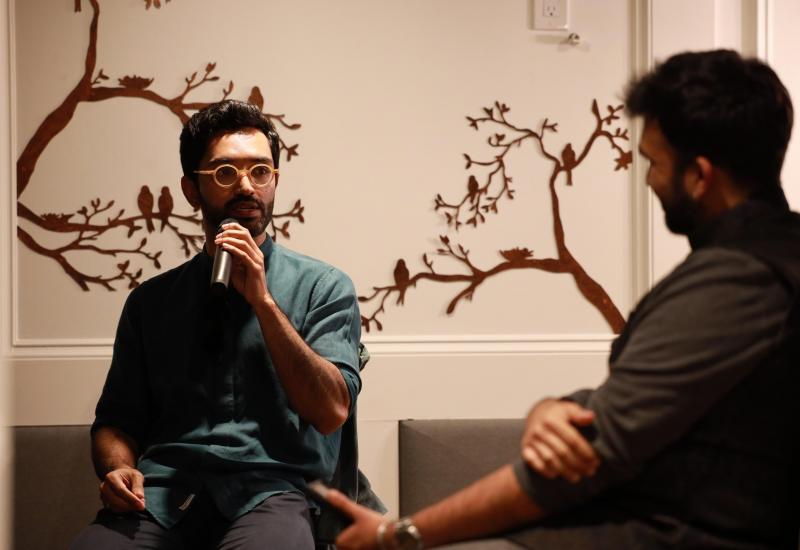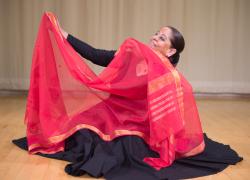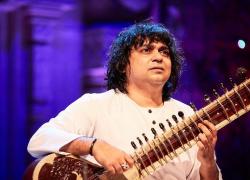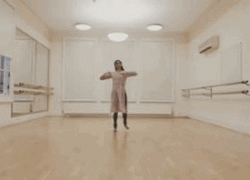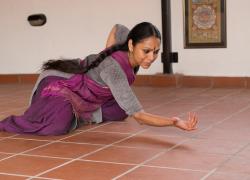Inside The Institution: Kala Sangam
Kala Sangam is a vibrant arts centre in Bradford, Yorkshire and is known for its support of South Asian arts. It was founded in 1993 by the Upadhayas, a medical practitioner couple with an interest in the arts. Dr Geetha Upadhaya was a bharatanatyam dancer, which set the direction of the organisation that promoted classical dance and music, alongside health and well-being initiatives. Creative Director Alex Croft is behind Kala Sangam’s recently re-imagined strategic vision, and I spoke to him to understand how the venue programmes its work and how it sees the future of South Asian dance. This is part of a series of interviews that began last year, as a probing into the venue-side of dance work.
HOW WOULD YOU describe Kala Sangam?
It’s a small-scale and experimental theatre that offers a safe space for artists, but also for audiences. People can take a risk and come in and watch something they are not sure about.
And how about the region that Kala Sangam inhabits?
The Bradford audience is markedly different from Leeds, though they are geographically close. When I arrived, Bradford had a very small but loyal audience for Indian classical dance. Since then, we have been trying to grow the audience and diversify it. Instead of just Indian classical music and dance, we are programming South Asian arts that connects with a broader community, like Qawwali music, which speaks to Pakistani and Muslim communities. We now have doubled the audiences for the South Asian work that we programme, and have seen people coming to classically rooted Indian dance who wouldn’t have before. Equally, our bharatanatyam students were only really watching classical Indian dance, but now they are stepping into the theatre to see other things. We want them to keep watching what they do, but to diversify their influences. Audiences have grown by about 64%.
What version of south Asian dance is most accessible for audiences at Kala Sangam?
Well, we look for work that has ‘relevance’. By which I mean, the theme and subject matter of the work is more important than the genre and style. We look for Indian classical dance that has important concepts driving it. Jaivant Patel’s ‘Yaatra’ uses Kathak, and some contemporary dance vocabulary, but most importantly it is something that an LGBTQ+ audience would be interested in. We implemented a ‘pay what you decide’ policy for nearly all of our shows which made a huge difference, particularly for those locals who wouldn’t otherwise venture into the space.
Are there any other questions you ask when considering proposals for shows?
It has to be inside at least one of the three programming strands: work that explores British South Asian heritage, work that explores living in Bradford, and work that speaks of British diversity and goes beyond race and faith-based work. As a programmer, it’s often about looking for balance across these priorities. Work that reaches specific or multiple communities is always more appealing. And of course, there is budget. I have much more space to support Indian classical dance than other venues, but it is still limited by the maximum budget I have, which to be really open with you is £18,000 – for everything at Kala Sangam. It’s increasingly important that the proposal is an easy package to take; that it includes high quality marketing, that it’s of reliable professional quality, that the choreographer / creator understands audience development.
Does this mean that it’s more difficult for ensemble work to get programmed?
It is indeed not as affordable, but maybe they have match funding or maybe they already have a relationship with us –- we like building long-term relationships to support artists to outgrow small venues like Kala Sangam. For Seeta Patel’s Rite of Spring we were the smallest audience that they performed to, but also they were ACE-funded and very supported. A lot of the work that we take is increasingly ACE-funded, so that we can keep our costs within budget.
What about British Asian artists who are no longer grappling with an identity crisis? Personally, I can find myself resenting the pressure to make work about my identity.
The work should be authentic to the artist. We try and give artists the space and support to create work that is valid for them, through our artist development programmes. I understand that there is a frustration; being fed up of being a BAME artist and just wanting to be an artist. We do want to help artists get out of silos, where they only exist in the Indian classical dance world. There’s a big need for BAME artists across the sector, running mainstream organisations, for example. Though, I admit the ‘mainstream’ itself is a fallacy - contemporary dance can be utterly impenetrable to audiences.
What are the main challenges that the classical Indian dance genre faces, in your opinion?
The biggest challenge in the programming context is the professionalism of the product. There needs to be high quality throughout, from high production values to match funding, especially when venues are even smaller and more profit-dependent than Kala Sangam. But to be honest, dance as a whole is a challenge for programmers – it’s difficult to develop audiences for it.
In this era of limited funding and resources, how does the sector stay relevant and stop itself being perceived as a heritage product? By ‘heritage’, I could give the example of ballet. People are beginning to ask, what’s the validity in the same steps being performed the same over 100s of years? Is that the creation of great art, or is that just the reproduction of something over and over? Of course there is value in keeping cultural traditions alive - it would be a shame if these were only performed in community venues and lost that main stage platform. But this is an important conversation that we need to be brave enough to sit around the table and have: How do we keep classical performances alive? How do we protect our art forms in Britain? How much does it cost to programme some of this very classical work? Otherwise I worry that classical dance might just slip off the main stage by accident, because other things are meeting ACE’s agenda more strongly.
You might also like to see our interview with Alex Croft from March 2018, where he spoke about his vision for Kala Sangam .

